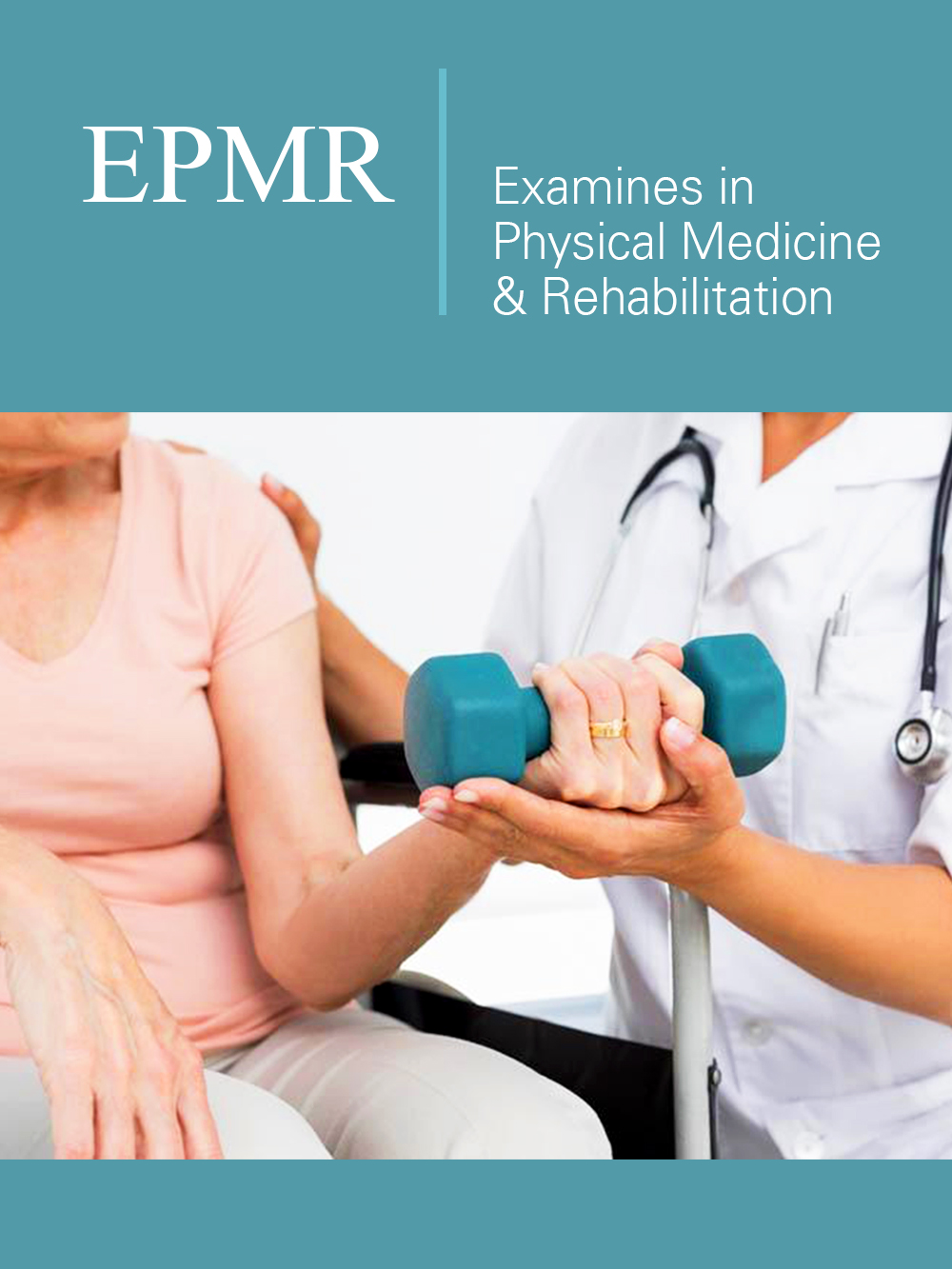- Submissions

Full Text
Examines in Physical Medicine and Rehabilitation: Open Access
Aging in People with Cerebral Palsy: What do we Know?
Patricia Solís García*
Department of Rehabilitation, Spain
*Corresponding author: Patricia Solís García, Department of Rehabilitation, Spain
Submission: March 11, 2020; Published: March 18, 2020

ISSN 2637-7934 Volume3 Issue1
Opinion
Thanks to technical and sanitary advances in recent decades, there has been a considerable improvement in the quality of life which leads to a quantitative increase in life expectancy. Around the second half of the twentieth century, a demographic transition due to social, health and economic improvements began to be generated in Western countries. This transition has changed the structure of our society (Coyle [1]). This aging process also affects people with intellectual disabilities and the group of people with CP (Coppus [2]). Its repercussions are very important since they require multiple supports and services to respond to the needs derived from this process (Moro [3] & Schepens [4]).
Aging is a natural process that occurs with very varied changes and, in the group of people with disabilities, this process is the result of a temporary advance, largely due to secondary problems caused by disability (Alcedo [5] & Martin [6]). Thanks to medical advances, more people living in developed countries are surviving adolescence and adulthood with CP (Frisch [7]). These people grow old and understanding the symptoms and complications underlying their disability and how they influence their life expectancy is crucial (Coppus [2]).
A systematic review is carried out to analyze publications that address aging in people with CP (Solís [8]). It is noted that adults with CP require access to health services to meet their changing needs at this vital stage (Morgan [9]). This population experiences multiple and functional changes as they get older (Dark [10]), these changes influence perceived health and a decrease in functional level (Benner [11]). Extremely sedentary behaviors frequently occur in this population that lead to an accelerated progression characteristic of muscular pathology (Peterson [12]), which in turn leads to a decline in functional capacity (Taylor [13]). As they age, they lose many of the achievements they acquired in rehabilitation (Moll [14]).
It is necessary to delve into the study of this topic, especially in psychosocial areas that allow us to provide data and action strategies to people in their aging process, family and professionals, comprehensively improving care and being able to perform preventive actions (Solís [8]). Since a greater understanding of the conditions surrounding the aging process of people with PC will affect improving their quality of life.
References
- Coyle CE, Mutchler JE (2017) Aging with disability: Advancement of a cross-disciplinary research network. Research on Aging 39(6): 683-692.
- Coppus AMW (2013) People with intellectual disability: What do we know about adulthood and life expectancy? Developmental Disabilities Research Reviews 18(1): 6-16.
- Moro TT, Savage TA, Gehlert S (2017) Agency, social and healthcare supports for adults with intellectual disability at the end of life in out‐of‐home, non‐institutional community residences in Western nations: A literature review. Journal of Applied Research in Intellectual Disabilities. 30(6): 1045-1056.
- Schepens HR, Puyenbroeck J, Maes B (2017) What indicates and determines quality of life for elderly people with intellectual disabilities? Journal of Mental Health Research in Intellectual Disabilities 10: 46-46.
- Alcedo MÁ, Fontanil Y, Solís P, Pedrosa I, Aguado AL (2017) Aging people with intellectual disabilities: Perceived needs assessment. International Journal of Clinical and Health Psychology 17(1): 38-45.
- Martin L, Ouellette KH, Kenzie K (2017) The power of population health data on aging and intellectual and developmental disabilities: Reactions of knowledge users. Journal of Policy and Practice in Intellectual Disabilities 14(4): 268-278.
- Frisch DM, Sall ME (2013) Health, functioning, and participation of adolescents and adults with cerebral palsy: A review of outcomes research. Developmental Disabilities Research Reviews 18(1): 84-94.
- Solís P, Real S (2019) Current state of research in cerebral palsy and aging: systematic review. Spanish Magazine of Disability 7(2): 103-122.
- Morgan P, Pogrebnoy D, Donald R (2014) Health service experiences to address mobility decline in ambulant adults ageing with cerebral palsy. Journal of Intellectual & Developmental Disability 39(3): 282-289.
- Dark LJ, Clemson L, Balandin S (2016) Communication changes experienced by adults with cerebral palsy as they age. International Journal of Speech Language Pathology 18(6): 521-532.
- Benner JL, Hilberink SR, Veenis T, Stam HJ, Slot WM, et al. (2017) Long-term deterioration of perceived health and functioning in adults with cerebral palsy. Archives of Physical Medicine and Rehabilitation 98(11): 2196-2205.
- Peterson MD, Gordon PM, Hurvitz EA, Burant CF (2012) Secondary muscle pathology and metabolic dysregulation in adults with cerebral palsy. American Journal of Physiology Endocrinology and Metabolism 303(9): E1085-E1093.
- Taylor NF, Dodd KJ, Larkin H (2004) Adults with cerebral palsy benefit from participating in a strength training programme at a community gymnasium. Disability and Rehabilitation 26(19): 1128-1134.
- Moll LR, Cott CA (2012) The paradox of normalization through rehabilitation: Growing up and growing older with cerebral palsy. Disability and Rehabilitation 35(15): 1276-1283.
© 2020 Patricia Solís García. This is an open access article distributed under the terms of the Creative Commons Attribution License , which permits unrestricted use, distribution, and build upon your work non-commercially.
 a Creative Commons Attribution 4.0 International License. Based on a work at www.crimsonpublishers.com.
Best viewed in
a Creative Commons Attribution 4.0 International License. Based on a work at www.crimsonpublishers.com.
Best viewed in 







.jpg)






























 Editorial Board Registrations
Editorial Board Registrations Submit your Article
Submit your Article Refer a Friend
Refer a Friend Advertise With Us
Advertise With Us
.jpg)






.jpg)














.bmp)
.jpg)
.png)
.jpg)










.jpg)






.png)

.png)



.png)






